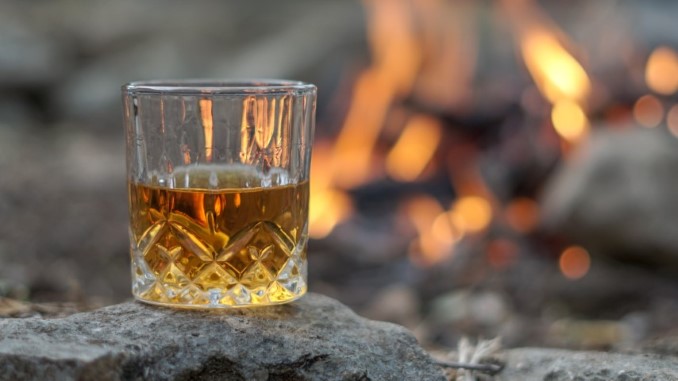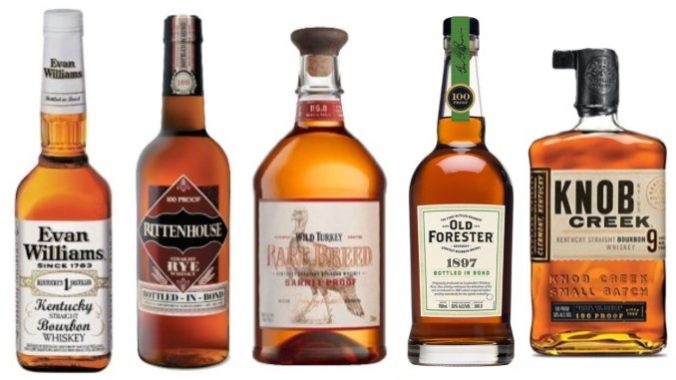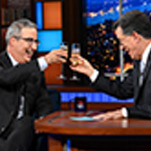Cocktail Queries: When Should “Whiskey” Have an “E”?
Photos via Unsplash, Thomas Park
Cocktail Queries is a Paste series that examines and answers basic, common questions that drinkers may have about mixed drinks, cocktails and spirits. Check out every entry in the series to date.
As a spirits drinker explores the width and breadth of world whiskey styles, they really can’t help but eventually notice the glaring inconsistency of the word “whiskey” itself. Suffice to say, not everyone spells the word the same way. Some markets almost unilaterally spell the spirit as “whisky,” while others have almost entirely adopted “whiskey.” But why is this the case? What styles tend to be spelled each way? And what are the prominent exceptions to those rules?
The case for whiskey vs. whisky largely comes down to not just geography, but the timeline of spirits evolution. Or in other words, it matters not just where we are talking about, but when.
Once upon a time, essentially all whiskey being produced on Earth was referred to simply as “whisky.” This style of spirit had arisen in the U.K., popularized in Scotland and Ireland. Because distilled spirits were referred to as “aqua vitae” or “water of life” in Latin, the relative translation into Scotch Gaelic was uisge beatha. This “uisge” was eventually standardized in modern English as “whisky.” Through the mid-1800s, this “whisky” became the generally accepted, standard spelling of the word wherever the spirit was being produced.
In the late 1800s, however, things began to change. Irish distillers, who had dominated the global whiskey market for decades, began losing ground to their Scottish competitors, who saw great success producing less expensive blends of malt and grain whiskies. The Irish whiskey market would eventually adopt this same strategy for many of their flagship products, but in the late 1800s and early 1900s many distilleries were still trying to draw a distinction between their product and the Scottish one. And in the process, many Irish distillers began spelling the word as “whiskey,” with an E.
This would prove to be an influential choice on the world stage, as in Pre-Prohibition America, Irish whiskey was typically seen as a more premium, expensive product than Scottish whisky blends. Following the repeal of Prohibition in 1933, then, most American whiskey producers seemingly took their cues from both the popularity and reputation of Irish whiskey, and began spelling American whiskey styles such as bourbon and rye whiskey with the “E” as well. Over the subsequent decades, this has become largely standardized in the U.S., with some notable exceptions.
Today, that leaves us with the following status quo:
Scotland

In Scotland, the spelling of the spirit as “whisky” has never really wavered. It doesn’t matter if it’s single malt scotch whisky or any of the major market blends such as Johnnie Walker, Famous Grouse, Cutty Sark, etc.–they’re all “whisky.” There aren’t really any exceptions to this rule that I’m aware of, as even the nouveau distilleries that have come onto the scene in the last decade or so have abided by the traditional spelling of the word. Scotland therefore theoretically represents the old guard in this capacity.
Ireland
Even though whiskey produced in Ireland eventually adopted many of the same techniques being used in Scotland, including a prevalence of flagship brands that are blends of grain whiskey and malt whiskey, they largely kept the changed spelling of “whiskey” that evolved in the late 1800s and early 1900s. This remains the most common spelling in Ireland today, though there are some exceptions on the fringes. Notably, the brands leading the push for Ireland’s signature national style of single pot still whiskey, such as Redbreast or Green Spot, all use the spelling of “whiskey.”
The United States

The U.S. is one of the more complex cases for the spelling of this word, because prior to the Prohibition of alcohol in the U.S. from 1920-1933, the use of “whisky” was fairly universal. It was only after Prohibition’s repeal that “whiskey” became more common, dovetailing with the rising popularity and production numbers of U.S.-based producers of homegrown whiskey styles such as bourbon and rye whiskey.
Today, the vast majority of bourbon and rye producers do continue to use “whiskey,” but the U.S. market has some very notable exceptions, including a few major players in the industry. George Dickel is one that has always used the term “whisky,” and two others that (somewhat confusingly) do the same are Maker’s Mark and Old Forester. In each case, there tends to be a specific historic rationale, whether it’s Old Forester simply leaning on their history as a brand that has been around since “whisky” was the universal term, to Maker’s Mark acknowledging the Scottish heritage of creator T. William Samuels Sr. As a general rule, though, if you’re talking about bourbon, or even American single malt whiskey, it’s probably best to write “whiskey.”
Canada, Japan, India and Beyond
The stances on the spelling of this word taken by Scotland and the U.S. tend to be reflected in other cultures around the world distilling whiskey, in the sense that they tend to adopt whichever spelling of the word conforms to the style of spirit they’re producing. In Japan, where malt whisky is most common, distillation and aging techniques tend to draw their inspiration from the Scottish style. Thus, Japanese distilleries typically use the spelling of “whisky,” because their domestic whisky production is more similar to scotch whisky than to something like American bourbon whiskey. India largely is in the same boat, though there are obviously exceptions.
Canada, meanwhile, is another particularly interesting and individualistic industry for whiskey, given their style of typically distilling a single type of grain at a time and then blending those individually aged spirits to create a final profile. As such, Canadian distilleries are often capable of blending something up that, depending on the distillation and aging techniques used in each component, can evoke either American or Scottish whisky styles. Despite this, they largely take their cues from the scotch whisky industry and have preserved the spelling of “whisky” with no E.
All told, this makes for a global whiskey industry where there is no single, correct answer when it comes to the spelling of one of our favorite words. Only with the context of what you’re drinking and where it comes from can one really make an educated guess.
Jim Vorel is a Paste staff writer and resident beer and liquor geek. You can follow him on Twitter for more drink writing.







































